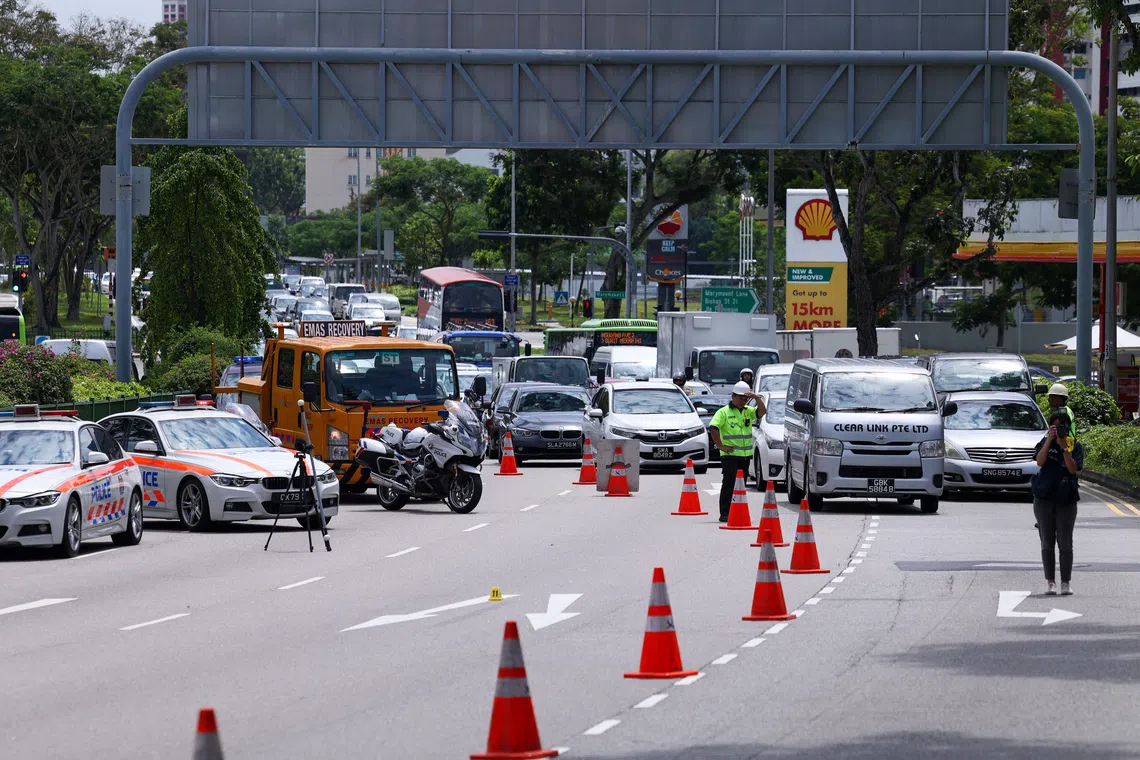Torque Shop: What to do if you are caught in the middle of a chain collision
Sign up now: Get ST's newsletters delivered to your inbox

Note down the circumstances surrounding the accident to make an accurate report.
PHOTO: LIANHE ZAOBAO
Follow topic:
- After a car crash, prioritise calling an ambulance and avoid moving injured people or vehicles involved in serious incidents.
- Remember key details like speed, braking style, and time elapsed before impact for police and insurance reports to ensure accuracy.
- Report accidents to insurers within 24 hours to avoid policy issues, and gather photo/video evidence, prioritising safety from traffic.
AI generated
What should I do if I did not cause an accident but end up in the middle of a chain collision?
A chain collision can occur even if you are able to stop in time behind a car that brakes suddenly, but the car following yours does not and rear-ends it. Your car may be pushed forward by the impact and end up crashing into the car that you had seconds earlier managed to stop safely behind.
If you or your passengers are injured and require medical attention, the first thing to do will be to call an ambulance even before you step out of the car. If someone is injured or there has been a fatal accident, do not attempt to move the person or vehicle.
Apart from these, your main concern should be to recall the exact circumstances, lest you forget the details later when making the traffic police and insurance reports.
A traffic police report is generally not required. However, when there is a fatality, damage to government property or a pedestrian or cyclist involved, a traffic police report has to be made as soon as possible or within 24 hours of the accident.
In any case, it is a requirement to report the accident to your motor insurer within 24 hours or by the next working day. If this is not done, the insurer can repudiate liability, dock the no-claims discount, cancel or refuse to renew the policy. This is according to the framework set out by the General Insurance Association of Singapore for motor claims, which all insurers adhere to.
The report can be made at the approved reporting centre or authorised workshops appointed by the motor insurer.
The critical points to record – at least based on your memory – include your travelling speed, the time between your stop and the rear-end crash, whether you braked hard or gently, and how close the car behind you was. It would, of course, be useful if your car has front and rear video cameras on board, as the footage can be indisputable evidence.
In addition to video footage, remember to take plenty of photos from various angles of the damage to the vehicles involved, the traffic conditions, general location and licence plate numbers. While doing so, take special care to stay out of the way of passing traffic.
If the chain collision happens on the highway, stay clear of the lanes, going as far as to climb onto the centre divider. You want to avoid getting into a secondary crash that can cause further damage or injury.
Generally, if you had come to a complete stop for a few seconds without any drama before you were rear-ended, the other party will bear the majority or all the liability.
On the other hand, if you had followed the car in front a little too closely and hence had to apply heavy or emergency braking, you may be faced with some level of contributory negligence.
To speed up the reporting process, a motor accident report can be filed on m.gears.com.sg
Additional reporting by Lee Nian Tjoe

